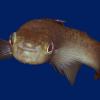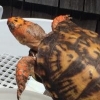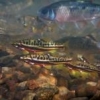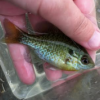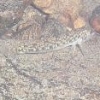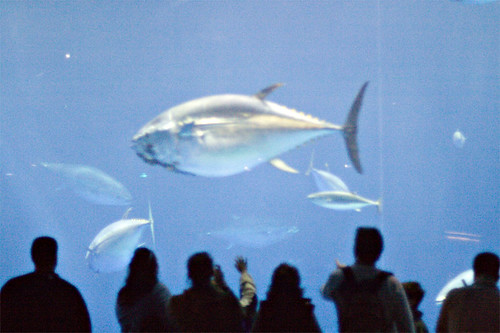I have collected florida natives a while now, along with snorkeling in our beautiful springs. The bluefin killie is probably the most interesting, and beautiful little fish occupying the shallow water there. however, so far my bluefin keeping experience has been not too good. I want to start a dedicated bluefin tank, Space is limited, so i am thinking a 20 gallon low. Seems like that should be adequate. It will be pretty heavily planted with Valisneria, and anything else needed. Suggestions. Also, how do I replicate the beautiful light effect of springs at midday?My bluefins , with a few exceptions have failed to grow well, Do I need to go to live food, or frozen?Are they any special water condition issues? Would they be more comfortable with another species, or alone?Can I breed a population in tank, or do I have to start a breeding tank? Lots of questions, I know any advice welome, not going to rush into this one.
bluefin aquarium
#2

Posted 05 October 2015 - 07:31 AM
you CAN breed a population in tank, but most of the young will be eaten. best bet for in tank breeding is to keep lots and lots of very fine plants, and feed the tank a whole lot of small live foods so that the fry can eat without having to leave their safe havens. even then, dont expect much. 50 or so blue fins in a single tank that was slam full of dense plants, i only ever saw three or four fry that were large enough to not get eaten.
you can get good results with breeder mops. green yarn works pretty good, just inspect them and when you see eggs, move them to a hatch out tank. they wont lay ALL of their eggs in the mop, but if they dont have a lot of other options, you will likely get plenty. they WILL lay their eggs on just about anything though. but they do seem to prefer breeder mops. i went with cladophora algae for the spawning sites, some tough species that i happened on that grows nice thick, dense mats. it works great in a breeder tank. i just tossed the algae in, added some crushed coral(it doesnt grow well without it) and added the breeding pairs. you can then check the algae periodically for eggs or just pull it out and pull whatever fry you see every week or so. i was producing more than i could handle this way. i sold a few hundred of them.
for breeding them, they do best with live foods, and it doesnt really matter what kind. the key is to give them something to graze constantly. one of my favorites is grindal worms. they live for quite a while under water(seemingly indefinitely if there is good aeration), so less problems with the water fouling. the clado algae i used grew so fast for me that i didnt have to do water changes much, it sucked up all the ammonia as fast as it was produced. that made over feeding very difficult to do. i would powerfeed them for a few weeks and then move the my favorites into a display tank.
here is a video of some blue fins getting fed grindal worms. it may seem like i was feeding them a lot, but this wasnt much food compared to how much i could get away with in the algae powered breeding tanks...
http://vid1242.photo...ck/IMG_0753.mp4
another video just showing the tank off... ![]()
http://s1242.photobu...ml?sort=3&o=366
the fish would eat and then forage for the next several hours on the worms that were still alive at the bottom of the tank.
for newly collected blue fins, try not to spook them. my bluefins liked to commit suicide for the first month or so whenever i fed them or turned the light on. wrapping the tank with cloth before i turned the lights on and whenever i fed them seemed to help, but i still lost quite a few as they slammed into the tank walls.
Edited by Auban, 05 October 2015 - 07:34 AM.
#3

Posted 05 October 2015 - 08:04 AM
thank you, beautiful tank, full of gorgeous bluefins, the algae mats you use, do they grow on bottom or surface?what do you feed the fry? loss of new caught bluefins is also a problem for me, maybe i'll pull out the tiny round kiddie pond i used to raise a few flagfish in my pool enclosure last year. what do you use for light?
#4

Posted 05 October 2015 - 08:16 AM
I have not done well with BFK's in small tanks.
I have a theory ... actually, I have a lot of theories, but this one is on-topic ... that despite their small size, BFKs really are not comfortable in shallow tanks, and that contributes to their spookiness. When you see them cavorting in the wild, they're usually at 12" or deeper. (Adults anyway.)
They've done better for me in a 20-tall. Haven't made any effort to breed them. Would be interesting to see if a tank with deep water at one end, and a 1-2" deep section at the other, would give the babies a protection zone because the adult BFKs weren't comfortable getting into such shallow water.
Doug Dame
Floridian now back in Florida
#6

Posted 05 October 2015 - 12:07 PM
the algae likes to float if its not tied down to something. here is a thread i posted about it:
http://forum.nanfa.o...lings-on-algae/
i didnt feed the fry anything at all until they were big enough to eat grindal worms. enough small critters grew in the algae to feed them up until that point.
for light, i used anything and everything. shop lights, LEDs, compact flourescents, anything to keep the algae growing. i left the lights on 24/7.
#7

Posted 05 October 2015 - 01:10 PM
The only time I had any luck keeping Bluefin killifish was in a 20 gallon tall tank. I had eight or so fish for 2-3 years. I also kept a single fish in a five gallon tank for about three years. I've read that they are very sensitive to poor water conditions. The 20 gallon tall tank water conditions were very good, but that in the five gallon tank was neglected. I once caught Bluefin killies in a low quality stream in Florida that appeared to be the community dumping ground. So water quality appears less important than what I've read.
One summer I put about 6 bluefins in a 100 gallon stock tank with plenty of hornwort and najas and collected 130 fish from it at the end of the summer. They then proceeded to die off during the winter in my indoor aquaria, primarily 20 gallon longs. Perhaps taller tanks are a good idea.
Any information on pH and other water conditions would be appreciated. I'd like to be successful with them, but with my history of mostly failures, I've giving up on trying to keep them.
Phil Nixon
#8

Posted 05 October 2015 - 03:00 PM
I almost wrote that my other BFK impression is that they are more susceptible to (unknown) WQ problems in tanks than in the wild, and so large volume tanks that are less susceptible to volatility would be better.
They're an easy fish to keep, except that they aren't always an easy fish to keep. Maybe they don't really thrive unless they have a lot of microfauna to graze on. Is a mystery.
Doug Dame
Floridian now back in Florida
#9

Posted 05 October 2015 - 03:10 PM
your all probably going to hate me for saying this but...
i bred most of mine in little 2 and a half gallon and five gallon tanks, and i never did water changes. i only topped them off to replace what evaporated. i kept them in liquid rock, and contrary to typical advice, there was ALWAYS food present for them.
i let the algae feed the fry until they were big enough for grindals, and then i power fed the crap out of them.
i couldnt give them away fast enough...
#10

Posted 05 October 2015 - 04:41 PM
I have a theory ... actually, I have a lot of theories, but this one is on-topic ... that despite their small size, BFKs really are not comfortable in shallow tanks, and that contributes to their spookiness. When you see them cavorting in the wild, they're usually at 12" or deeper. (Adults anyway.)
That makes me think, not about bluefins, but fishkeeping in general, how would a tank deep on one end, and only an a few inches deep on the other, with a gradual transition in between, affect what fish you could keep, and how many.
"All good things must come to an end, but bad things think thats rather dull, so they stick around long after their natural end has come"
-From an art book I read
#11

Posted 05 October 2015 - 06:33 PM
I currently have about a dozen bluefins from the Florida trip in February. They were all (except maybe 2 or 3) collected from the Rainbow River right behind the house where we snorkeled. I did lose a few during transit, and I had several larger individuals become VERY skinny and waste away and die within about a month after the trip (despite eating...maybe it was just their time). The remaining fish, however, have been in a 10 gallon ever since and are thriving and breeding. They get a hearty portion of baby brine shrimp 3-4 times a week and an occasional bit of flake food or frozen brine otherwise. Their tank currently has no decorations besides gravel, a few sad looking dwarf saggittaria, and two floating spawning mops that hang to the bottom of the tank (and a few inches that lay on the bottom). So far, I've not had any problems with them and have been getting maybe 8-10 eggs off the mops per week for the last few weeks. They are in regular local tap water with just a hint of blackwater extract (originally for the Pteronotropis that were housed with them) and do just fine. Additionally, They were housed with some brown darters and Pteronotropis juveniles, but very unfortunately those two species were wiped out by some unknown illness about 2 months ago. The bluefins seemed to be totally immune besides one that died during treatment, which may be more medicine related than disease related.
I screwed up the first batch when I left town for several days on short notice, but I currently have about a dozen fry ranging from just over a week old to 2 days old, and several eggs yet to hatch. Fry seem to be easy so far and take baby brine shrimp as soon as their yolk is gone. If you want a colony to keep going, I'd advise you to have a dedicated breeding setup and a separate display tank if possible. On the bright side, even adults have tiny mouths. I think in the absence of other tankmakes, these fry will probably be big enough to be safe with adults within 3 weeks or so.
Derek Wheaton
On a mountain overlooking the North Fork Roanoke River on one side, the New River Valley on the other, and a few minutes away from the James River watershed...the good life...
Enchanting Ectotherms
My Personal Facebook (mostly fish related, if you'd like to add me)
#12

Posted 06 October 2015 - 03:33 PM
I got some bluefin killies from a LFS when they came in as contaminants in a ghost shrimp shipment. I didn't know much about them, but I figured they couldn't be too delicate (they survived in the clean-but-crowded feeder tank, after all) and I took them home. They lasted about 8 months in my community tank, then just gradually died off. Given their short lifespans and the fact that they were adults when I got them, I suspect they may have just died of old age.
The tank didn't have anything special about it. 65g, tetras and pencilfish, moderately planted. The only unusual thing was the water color- thanks to a very nice piece of driftwood, the water was never crystal-clear, and it was usually pretty heavily tinted with tannins. Perhaps the bluefins liked that? They were always pretty spunky, and they would spar with each other on a regular basis.
I'm looking for more. I like them.
#14

Posted 08 October 2015 - 08:19 AM
that fish looks delicious!
#16

Posted 16 October 2015 - 06:01 AM
Adults will do fine on commercial frozen foods too if live foods are too hard to get, especially in the winter. I have usually kept them in community tanks and have not bred them, but they do get into breeding colors on frozen food.
plus one to this.
mine always went nuts over frozen bloodworms.
Reply to this topic
0 user(s) are reading this topic
0 members, 0 guests, 0 anonymous users


